| ^ recognize anyone? :P |
|
Hey there! Mission 31 made it into TIME Magazine's Modern Explorers Edition! Check out the magazine at news stands or via collectors on Amazon.com. TIME's online coverage here. Using cutting edge technology not really meant for the ocean was tricky! I'm the one filming upside down. It was easier to see the screen that way (and oddly comfortable underwater). Our photography will be featured in an art exhibit at MIT.  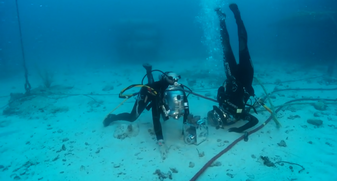 Bringing the camera close to a mantis shrimp in the sand while filming with the Edgertronic camera. Bringing the camera close to a mantis shrimp in the sand while filming with the Edgertronic camera. "Thanks to a couple of engineers at MIT, we were able to use a prototype camera called the Edgertronic to capture slow-motion video... And that particular camera gives us an insight into what fairly common animals do but we can't even see it in the blink of an eye. ... It gives us an insight into some of the animals that we were sitting right next to for 31 days and never normally would have paid attention to, such as hermit crabs." "Using a cutting-edge piece of technology that's not really meant for the oceans is not always easy. We sometimes had to put the camera upside down, cordon it back to the lab, and actually man the trigger from the lab itself. But what this gives us is the foresight to look at and analyze in scientific and engineering terms some of the most amazing behavior that the human eye just can't pick up, such as this manta shrimp trying to catch its prey, within about .3 seconds. That punch is as strong as a .22 caliber bullet, and if you ever try to catch a bullet in mid-flight with your eye, impossible. But now we can see things such as these Christmas tree worms pulling in and fanning out in a way that the eye just can't capture, or in this case, a fish throwing up grains of sand. This is an actual sailfin goby, and if you look at it in real time, it actually doesn't even show its fanning motion because it's so quick." "What I learned from spending 31 days underwater" was the title of Fabien Cousteau's TED talk this month in Rio de Janeiro about Mission 31. My focus on the mission, high speed filming with the Edgertronic camera, is featured from 7:00-9:04. Click here to watch!  From the transcript: Fabien summarizes the mission's goals and accomplishments, and stresses the need for further exploration of the oceans. For more info, check out my previous posts about working with the Edgertronic. AND, Photo Art EXHIBIT OPENING SOON!I'm also excited to say my KickStarter campaign to fund an exhibit of the underwater slow motion photography we shot on the Edgertronic from Mission 31 was a great success! Those near Boston are welcome to attend the opening on the evening of January 4th in MIT's Wiesner Art Gallery. Just shoot me a message for the details.
 Credit Kip Evans Credit Kip Evans On July 2nd I returned to land after living 15 days underwater with Fabien Cousteau and his amazing team. All my blog posts from the mission are on this site, starting from late-spring visits to Northeastern's Marine Science facility at beautiful Nahant and preparations at MIT, to day one of training, to M31 splash down and then splash up. MIT's Mechanical Engineering Department just produced this video with the article: Undersea living: Alumna joins Cousteau mission. "What’s it like living on the bottom of the ocean for more than two weeks? Nicer than you might think, according to Grace Young ." Some highlights from the blog: Some more highlights:
On our last full day underwater -- Day 31 of Mission 31 -- we dove in the morning and then started decompression. I wrote about my last hot chocolate by the magnificent Aquarius viewport in this blog post, and referred to Brain Helmuth's excellent article on The Science (and Math) of Decompression and fellow aquanaut Adam Zenone's post on his Aquarius decompression experience during the first half of the mission. Decompression: 18 Hours Oxygen administration during deco. Oxygen administration during deco. During decompression, an 18 hour process in total, they seal the door on the Aquarius wet porch; it has a nice greasy O-ring seal that I've accidentally brushed up against a few times throughout the mission. We started decompression by breathing pure oxygen for three sets of 20 minutes, with 5 minuets rest in between. During this time, we were in our bunks and watched Jacques Cousteau's World Without Sun, a documentary film about Jacques's undersea mission Conshelf II attempting to live and work on the seafloor that inspired Mission 31. The New York Times gave the film this great review in 1964! Fabien said in the press conference afterward that it was interesting to notice similarities between the way they did things on Conshelf II and the way we did some things on this mission. But he also noted that we had access to technology that Jacques could only dream about fifty years ago. While we lay there with the masks, dive medical technician Jason joined us in the Aquarius habitat to administer the oxygen. He'd be the only one not breathing O2 as a safety precaution in case all of us on the oxygen suffered complications.
During the second stage of our decompression, the inside pressure of Aquarius lowered from 2.5 atmospheres to 1 atmosphere, over the course of these 14 hours. I'm slightly embarrassed to say that I slept almost through the entire process. I was exhausted and I guess my body just needed 12 hours of sleep... Anyhow, apparently everyone else had dinner as usual and watched the fish out the window. There was no shark-grouper-barracuda feeding frenzy happening outside the window, unlike during the first decompression.
SPLASH UP, Day 32 (because of decompression)Time flew by during our last morning in the habitat. We all felt rushed. I woke up at 7 AM, and immediately set up the color Edgertronic camera, looking at fish feeding outside the port window. I figured it was my last opportunity to do so! I had to pack up within a half hour though, to help clean and prepare the habitat for re-compression. Shortly after we reached regular atmospheric pressure, the technicians then re-pressurized the habitat to 2.5 atmospheres over a half hour or so. Since we were no longer saturated, this was now like a surface dive for us, and so no longer being saturated, our bottom time was limited. Tom Potts and Carter from the Navy greeted us at the wet porch to escort us to the surface. We pulled on our SCUBA gear in the water and ascended to the surface. My brain didn't really have time to process. With nine divers following one ascent line, I was mostly focused on trying not to kick anyone in the head with my fins. Before I knew it, my head popped above the water. The first thing I noticed was a quad-copter flying above, filming areal shots of the splash up. That's it! We're surface dwellers again!
WELCOME BACK! BUT FIRST, a PRESS CONFERENCE
Then, the Splash Up PartyWHAT's NEXT?Right now, I'm in the Miami airport headed back to Boston for 4th of July weekend with friends (celebrating by the water!). Then, mid-next week I go to Aberdeen, Scotland, to start my internship in a company specializing in deep sea sonar imaging. I will attend the OCEANS'14 conference in mid-September, and then I start my PhD studies at Oxford University in the fall! By early 2015, you may see a documentary film in IMAX theaters about Mission 31. I feel like our work with Mission 31 in raising ocean awareness and processing the immense amount of scientific data we gathered has just begun, and that's exciting.
Throwback Thursday, Mission 31: I remember My Undersea Graduation (Mission Day 6). My last underwater images while officially on Mission 31 (tear). Credit Fabien Cousteau. This morning we went on an early dive and didn't need to swim far. Right below the wet porch, a school of fish swam and looped around and around sixteen feeding grouper. A nurse shark and groups of snapper joined the feeding frenzy, as Matt, Liz and I watched, in the middle of the action. It was our last dive of Mission 31. It's crazy how quickly time has passed! This afternoon we start decompression. That's when the pressure inside the habitat changes over the course of 18 hours, from 2.5 atmospheres to 1 atmosphere. Brain Helmuth, the Mission 31 science advisor from Northeastern, just wrote The Science (and Math) of Decompression, and fellow aquanaut Adam Zenone wrote about his decompression experience from the first half of the mission. By 7 AM tomorrow, our bodies will have slowly acclimated to surface pressure, and we'll return to the surface, where we'll celebrate "splash-up."
An overview of Mission 31 science thanks to Earth Island Journal: 31-Day Undersea Mission has Been a Boon for Marine Scientists; A young researcher talks about Fabien Cousteau's underwater living experiment.  This morning Fabien and I dove in the hard helmets for two hours, collecting and labeling the jars with plankton samples from last night and then collecting DNA samples of the sponge species A. Felix. Around lunchtime, we had an extra special visit from Fabien's sister, Celine Cousteau, who just returned from an expedition in the Amazon. She's an incredible women. I was excited to meet her! She even brought us real food -- a baguette and wedge of cheese -- to enjoy, and borrowed one of my spare Mission 31 wetsuits because we're the same size. I loved hearing her and Fabien talk about their adventures, switching between French and English. Celine said one thing she values most about living away from her comfort zone is the ability to gain a new perspective. Down here, we are "connected," so to speak -- we have Internet and regular visitors -- but we are also disconnected from our normal lives. After their filmed interview, Celine FaceTimed with her son and husband, and then we all took a selfie ... Time has flown by. I've lived with the same five people for the past 13 days underwater, with two more days to go. Honestly, it's been more comfortable than I expected living underwater. I miss my friends and family, although we've kept up via Skype. In terms of health and comfort, I'm no worse for the wear. The ear infection I had last week is cleared up, although I'm still on prescribed ear drops. Our Navy doctor made a house call today and looked at my ear in the wet porch. I happened to meet Celine as she got out of the shower (to wash the salt off) and I was getting my ear exam on the step of the wet porch -- it's tight quarters here!  Vibrant sea life, Wrasse Vibrant sea life, Wrasse Observing the vibrant ecosystem in our backyard never gets old. It's different every day. This evening, we saw Wrasse mating. Our photographer Matt spent an hour filming a grouper at a cleaning station, letting cleaning shrimps go in and out of its gills. Matt said it took days for the grouper to get comfortable enough with his presence there. In the afternoon, Liz, Professor Brian Helmuth, Francis from Northeastern, and I live chatted with the Boston Museum of Science from the coffee table at Aquarius. We told them all about our research, and how and why we're living underwater. The audience asked intelligent questions, like had we seen a particular type of coral, what was the future of Aquarius, and why is exploring the deep ocean such a challenge. It was a fun chat; the video is here. On our evening dive, Liz and I deployed the 12 plankton traps for Amanda's research. It's our second-to-last day setting plankton traps, and we set them up in record time -- 30 minutes. The first time we set them up it took us a little over an hour. We used the extra time to look for two elusive species of sponge for DNA samples. We haven't found them yet; but tomorrow is another day. The Northeastern surface team also posted some some beautiful images of sea life from around Aquarius in their blog Perks of Underwater Science with this video of a Goliath grouper who hangs around the habitat and is nicknamed JYC (after Jacques Yves Cousteau). Now off to dinner, then bed!
There's more Grace Under Pressure blog at Aquarius Day 4: Science and Ballet Arts Undersea. It's scary how fast time as flown by since living and working undersea. Only one day left on Mission 31 and there's so much we'd like to do! In a way, feel like we're just getting started. The research, ocean outreach, great people involved and connected with Mission 31, and experience exploring the ocean have been fantastic. I was asked, "Have you been scared underwater?"1. Spooked, but Not Scared Baraccuda, shark, grouper. Credit M31 Baraccuda, shark, grouper. Credit M31 A reporter just asked if I've encountered anything scary on Mission 31. The answer is that I haven’t felt scared; but I have been spooked. I was in the water for over an hour setting up the Edgertronic camera, focusing so intently on the scene we were filming that I didn't notice day had changed to night. When I looked up, it was pitch-black around me. I shined my dive light to my left, and a reef shark brushed right past me! I was spooked, but not scared. We are always in communication with our support teams while diving via the communications line in our helmets, and are trained to deal with any sort of emergency. We also run through a checklist before every dive. I always feel safe down here. I also had a staring contest with a barracuda on one of my first Mission 31 dives.  I'd like to meet this tiny octo. I'd like to meet this tiny octo. Last summer I was working on a robot for NOAA in Hawaii and was scuba diving with a few friends there. We were about 20 ft. underwater. One of my friends is a marine biologist, and while we were swimming, I turned around and there was an octopus (about the size of a scuba tank) wrapped around him! My first instinct, of course, was to freak out! But I looked at my friend, and he looked so peaceful. He was playing with the octopus. The octopus was on him for a couple of minutes and then he swam away. It was one of those moments where you learned to balance emotion and logic. (Learn more about the amazing octopus in my blog.) 2. Scared, but Hopeful 95% of our ocean is unexplored. 95% of our ocean is unexplored. In general, my greatest fear is that we’ll destroy many of our fragile marine ecosystems before we even know they exist, or have learned what they can teach us. As I said in our Mission 31 chat from Aquarius with National Geographic, "I find it incredibly frightening that we have the technology to completely destroy the ocean in my lifetime." The oceans are mankind’s life support system. They produce up to 70% of our oxygen, absorb huge amounts carbon dioxide that would otherwise asphyxiate us, filter vast quantities of natural and man-made toxins, and provide essential food for billions of people. Yet we know more about the dark side of the moon than we do about two-thirds of our own planet! We know our survival depends on the oceans, yet we’re killing them with overfishing, pollution, and acidification cause by greenhouse gases, not to mention the implications of rising temperatures. Based on current trends, experts believe all marine life will become extinct in my lifetime unless we start managing our oceans better -- now. "We have to start with knowledge; there is so much more to learn and discover about our oceans." How much plastic is in the ocean? Way too much. This infographic by One World One Ocean explains. We can do simple things, like reuse and properly recycle. We can also ask if the plastic we're using is necessary, such as straws.
Here's an earlier post from my blog: Hey, now you can buy clothes made from that plastic that's polluting the ocean. "We are seeing sea critters move on a whole new time scale."
Capturing Ocean Life in Ultra Slow-Motion VideoWhat are currently doing on Mission 31? Here's a behind-the-scenes video diary of some of our work. We are using cutting edge technology to view ocean life like never before. We need to be fully saturated to capture these images at this depth because of the length of time required for set-up and filming in the ocean. Living at the same atmospheric pressure as the surrounding sea is a huge advantage that allows us to spend unlimited time working in the ocean. So, the research we're doing this month would take months or even years to accomplish with surface dives. That's one reason Mission 31 is so important and unique. Science Day & Night in AquariusRead more at:
 What's it like to live underwater? Aquarius is currently the only working undersea laboratory in the world. It's located just off the Florida Keys and is about the size of a school bus. There are enough bunk beds, three stacked on each side, for six aquanauts to stay at one time. The Magnificent ExteriorLet's begin with the exterior of Aquarius, which has become a living coral artificial reef. Aquarius is located in a marine sanctuary and run by Florida International University (FIU). I never tire of living among the beautiful vibrant colors here. Take a look at this video to find out what makes living undersea so important for ocean research. FIU describes the lab this way:
|
Thanks Fusion TV for the sHoutout and this video here!
|
Northeastern's magical Mission 31 talisman, the glowing dolphin. Credit Liz and the AAT Project
Fabien, Liz and my interview with National Geographic is now online at:
P.S Also check out the article on fellow Intel/CERN alum Taylor Wilson at the end of the NatGeo Mission 31 article. Keep up the great work Taylor!
"I find it incredibly frightening that we have the technology to completely destroy the ocean in my lifetime." -- Grace Young
 Doc Edgerton's iconic milk drop coronet.
Doc Edgerton's iconic milk drop coronet. The Edgertronic high-speed camera we are using on Mission 31 has never been used underwater. It just came out five weeks ago, and the underwater housing that Sexton Corporation customized for us (for the camera) arrived the eve of Liz and my Aquarius splashdown.
On land, MIT's "Doc" Edgerton revolutionized how we view motion. His iconic image of a milk drop, for example, shows the coronet-shaped structure formed the instant a drop hits liquid. It's fascinating that we “see” this seemly mundane phenomenon daily, yet its true majesty is never visible to the naked eye without the incredible speed of a camera to take images at fractions of a second.
Back in the 1950s, Jacques Cousteau and Doc Edgerton ("Papa Flash," as Cousteau called him) were fast friends. Jacques was the intrepid explorer and Edgerton the MIT tech whiz who developed special technologies that helped locate, capture and convey the glory of Jacques’ underwater discoveries. Now in 2014, the 50th anniversary of Jacques Cousteau’s Conshelf II underwater habitat expidition, the legacies of these two great pioneers are united once again on Mission 31 to hopefully convey some of the wonders we're still discovering undersea by testing the limits of new underwater imaging technology.
Our work with the Edgertronic camera on Mission 31 is capturing motion previously observed, but never fully visible, similar to the milk drop coronet phenomenon. Depending on the chosen resolution, this camera is capable of 500 frames per second at high resolution, and 18,000 (eighteen thousand!) frames per second at its lowest resolution. We're attempting to capture behaviors of undersea life with this incredible technology, and hope to ultimately capture the unique feeding behavior of the Goliath grouper (video not captured with Edgertronic).
The camera is tricky to use underwater. Adequate lighting is critical for the camera because the shutter is only open for fractions of a second, and good lighting is scarce to nonexistent undersea. In addition, setup takes about a half hour of sea time, and then another of hour of shooting time with someone providing computerized feedback from the dry habitat. (Liz wrote a blog post about the set-up process required.) We could really use more time!
The videos we are capturing are amazing. We are seeing the super-fast movements of sea creatures on a whole new time scale, movements that are impossible to comprehend with the naked eye. It’s mind-blowing to me to see nature working at this level. Several days ago I posted a short video of a yellow-headed jawfish and Liz posted a video of a manits shrimp striking a goby. Hopefully we'll post more in the coming days. Someday, I'd love to frame these images and put them with the videos in a museum: The Underwater World through Edgerton's Eyes.
On land, MIT's "Doc" Edgerton revolutionized how we view motion. His iconic image of a milk drop, for example, shows the coronet-shaped structure formed the instant a drop hits liquid. It's fascinating that we “see” this seemly mundane phenomenon daily, yet its true majesty is never visible to the naked eye without the incredible speed of a camera to take images at fractions of a second.
Back in the 1950s, Jacques Cousteau and Doc Edgerton ("Papa Flash," as Cousteau called him) were fast friends. Jacques was the intrepid explorer and Edgerton the MIT tech whiz who developed special technologies that helped locate, capture and convey the glory of Jacques’ underwater discoveries. Now in 2014, the 50th anniversary of Jacques Cousteau’s Conshelf II underwater habitat expidition, the legacies of these two great pioneers are united once again on Mission 31 to hopefully convey some of the wonders we're still discovering undersea by testing the limits of new underwater imaging technology.
Our work with the Edgertronic camera on Mission 31 is capturing motion previously observed, but never fully visible, similar to the milk drop coronet phenomenon. Depending on the chosen resolution, this camera is capable of 500 frames per second at high resolution, and 18,000 (eighteen thousand!) frames per second at its lowest resolution. We're attempting to capture behaviors of undersea life with this incredible technology, and hope to ultimately capture the unique feeding behavior of the Goliath grouper (video not captured with Edgertronic).
The camera is tricky to use underwater. Adequate lighting is critical for the camera because the shutter is only open for fractions of a second, and good lighting is scarce to nonexistent undersea. In addition, setup takes about a half hour of sea time, and then another of hour of shooting time with someone providing computerized feedback from the dry habitat. (Liz wrote a blog post about the set-up process required.) We could really use more time!
The videos we are capturing are amazing. We are seeing the super-fast movements of sea creatures on a whole new time scale, movements that are impossible to comprehend with the naked eye. It’s mind-blowing to me to see nature working at this level. Several days ago I posted a short video of a yellow-headed jawfish and Liz posted a video of a manits shrimp striking a goby. Hopefully we'll post more in the coming days. Someday, I'd love to frame these images and put them with the videos in a museum: The Underwater World through Edgerton's Eyes.
| Fellow aquanaut Liz Magee from Northeastern's Three Seas Program with the Edgertronic camera as we work together to capture images of sea life. | Setting-up the Edgertronic camera. This image is from Matt Ferraro, a fellow aquanaut and filmmaker from Changing Tides Media with over 15 years of experience. |
Update 6/28/14: Here's a video from Mission 31 about our work with the camera underwater.
| |
We also continue work on other of Mission 31 research projects, such as zooplankton collection and sea sponge identification and sampling for Northeastern's Ocean Genome Legacy project.
More blog at:
- What's Mission 31 About? This is Worth the Watch and
- Stunning Views of Life in the Sea, which shows some behind the scenes photos of setting up work with the Edgertronic camera.
This is a great video from Mission 31 about the midway aquanaut switch, when Liz and I descended to Aquarius. Aquanauts Adam, Andy and Kip first decompressed in Aquarius and then re-surfaced with outstretched arms to the sun. Liz, Matt and I said goodbye to the surface and dove to the bottom of the sea. Liz and I "high-fived" in the water on the dive down together to Aquarius.
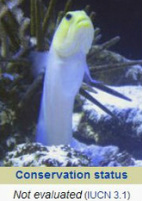 Yellow-headed jawfish
Yellow-headed jawfish I'm so excited I can hardly sleep ... today was incredible! We did so many things. We collected samples of plankton from the traps that we left out overnight, swam with three plankton tows, filmed three scenes for the documentary, set up the nighttime plankton traps and then, the highlight of my day, spent a few hours in the water capturing the stunning behavior of sea creatures in slow-motion with the Edgertronic camera. This is the first time this ultra high-speed camera has been used underwater, and It's amazing what we're able to see through the lens of this camera. We're learning things about animals' behaviors we never knew before!
VIDEO OF THE DAY
| | Here's a sneak peak of the kind of footage we are capturing. This clip shows a yellow-headed jawfish popping out of it's den, and then spiting out a mouthful of sand. In real time, this happens in the blink of an eye, but today we filmed it at the high speed of 2,000 frames per second, so you can see details of the fish's movement. We've also filmed sail fish, crabs dancing (what are they doing?!), sergeant major, coral cups feeding, Christmas tree worms, and bubbles. Incredible! |
WAIT, WHY IS THE VIDEO IN BLACK AND WHITE?
We are filming with a monochrome camera because it's more light sensitive than it's color counterpart, and in high-speed photography in general (and underwater in particular) we are hard-pressed for light. Visible light just doesn't travel well underwater. However, Edgertronic loaned us a color camera, and it arrived today! Let's see if we can get it to work underwater!
AQUARIUS VIEWPORT SWIM-BY
| This was a great Google hangout today about coral reef health in the Caribbean Basin hosted by Northeastern University's Urban Coastal Sustainability Initiative. Fabien, Liz and i were conducting research outside and "dropped by" to say hello in the Aquarius viewport. "You never know who's going to swim-by the viewport when you're in Aquarius," said Mark Patterson. |
WOMEN IN SCIENCE
I also posted this great video, Aquanauts Switch Mid-Mission from the Mission 31 production team showing Liz, Matt and I trading places with Adam, Andy and Kip to become fully- saturated aquanuts on the mission four days ago!
LIVING ON THE EDGE-RTRONIC *Clever title courtesy Liz Magee
THE ARTS AT AQUARIUS, UNDERWATER BALLET
 Click on image to link to the draft video.
Click on image to link to the draft video. With the Edgertronic ultra high-speed camera, we can see things that happen in the blink of an eye in slow motion. It's like seeing the world at a different time-warp. It lets us see the underwater world, and it's creatures, a whole new way. Today we spend 6 hours total in the water, and we focused on exploring with the Edgertronic camera. We captured some stunning footage. Here's a video of bubbles coming from Liz's helmet, captured at 1000 frames per second.
It's just amazing what you can discover, spending six hours in the water! Who knew bubbles moved so strangely like that? We also captured many videos of sea life, including coral cups feeding, crabs dancing (what are they doing?!), a sergeant major fanning it's eggs, and even a little zooplankton narrowly avoiding being eaten by a coral polyp. The other videos need some post-processing, but I'll distribute as soon as they're out. (And I'll post this video in a more accessible format when the internet is stronger tomorrow.)
It's just amazing what you can discover, spending six hours in the water! Who knew bubbles moved so strangely like that? We also captured many videos of sea life, including coral cups feeding, crabs dancing (what are they doing?!), a sergeant major fanning it's eggs, and even a little zooplankton narrowly avoiding being eaten by a coral polyp. The other videos need some post-processing, but I'll distribute as soon as they're out. (And I'll post this video in a more accessible format when the internet is stronger tomorrow.)
While Fabien and Ryan re-configured the camera for us inside the habitat, we had some time to play in the water. Here I'm performing some ballet (a grand pas de chat). Matt (second photo) did a handstand.
Fellow aquanaut Matt Ferraro, a filmmaker with over 15 years in film production, has some more great footage of us working today, but you'll have to wait for that to come out in the documentary film!
Fellow aquanaut Matt Ferraro, a filmmaker with over 15 years in film production, has some more great footage of us working today, but you'll have to wait for that to come out in the documentary film!
Congrats! DAY 20, LONGEST AQUARIUS MISSION
G'NIGHT FOR NOW ...
I wish I had time to process (and finish downloading) the footage now to post, but I need to sleep. Tomorrow is another early morning dive. We'll spend most of the day collecting plankton samples, identifying sponges for the Ocean Genome Project, and welcoming former aquanauts Mark Patterson and Steven Price back into Aquarius.
 Aquaman actor Adrian Grenier waved hi to me through the viewport yesterday. | Day 3 already! Oh man. Time is flying by. Even Fabien thinks so. As of today, he, Otter and Ryan have been here 19 days, making it one day longer than the longest previous stay in Aquarius. Just incredible. 6:00 AMWhen I rolled out of bed, every one was already up and at'um, eating breakfast, chatting, and prepping gear for the day. I started pulling on my wetsuit at about 6:30am, meanwhile reviewing with Liz our plan for the dive. |
7:00 AM
Liz and I started our dive. Before every dive we spend about 10 minutes going over a checklist with Otter, who reads the checklist, and Ryan, who helps us put the Kirby Morgan dive helmet on. (My dive helmet post with Lady Gaga is here.) In going over the checklist, we check the functionality of various valves and emergency back-ups on the helmet. Every time everything works, as far as I know. The checklist can seem tedious, but I realize how important it is. I started thinking back to Atul Gawande's book The Checklist Manifesto: How to Get Things Right. I remember hearing that the medical profession, which suffers from human error, should really use checklists, but doctors just don't. I see why. They're annoying. And everything seems to work. But then again, the checklist seems like the only way to ensure all is as it's suppose to be. Not only do we catch anything not functioning, but routinely checking all the valves, etc. puts our mind at ease. I never have that feeling of, "Am I forgetting something...." I just focus on my dive, and I feel like the master of my equipment.
This morning of our dive we collected samples in jars from the plankton traps (described in this previous post), and then stored the jars in a mesh bag that Northeastern divers will pick up in the afternoon. We also adjusted a tripod around a giant barrel sponge. The tripod suspends a sensor above the sponge, and the sensors measures the sponge metabolism.
This morning of our dive we collected samples in jars from the plankton traps (described in this previous post), and then stored the jars in a mesh bag that Northeastern divers will pick up in the afternoon. We also adjusted a tripod around a giant barrel sponge. The tripod suspends a sensor above the sponge, and the sensors measures the sponge metabolism.
9:00 AM
We returned to Aquarius from our first dive. I ate a late breakfast and change both the the lens and set-up on the Edgertronic camera in case we have extra time to use it on our afternoon dive.
Met an astronaut, in the water!
| On our second dive of the day, from noon to 3pm, we greeted astronaut Clay Anderson in the water. It was unreal. Fabien, Liz and I all shook his hand as he stepped onto the "porch" of Aquarius. We then gave him a tour around the house. A video of his visit is here. There's an interesting New York Times' article about the space and sea: Cosmic Connections in the Deep Sea. Living undersea, I have a new appreciation for our planet as a whole. Both astronauts and aquanauts are willing to live in an alien environment to explore the unknown, which links our cosmic work, whether it be in space or ocean. We are still looking for life in outer space, but there's so much undersea. During our afternoon dive, Liz and I also used a plankton tow to collect more plankton samples. You can read more about the research we are doing with the Northeastern topside team at their blog, specifically Amanda's post about zooplankton. |
Astronauts and Aquanauts on Jacques B'Day
Space and ocean and space explorers alike remembered Jacques Cousteau, the great explorer, on his birthday this month. See my post Happy Birthday Jacques Cousteau! for details of the celebration.
OUTREACH, Great Questions
 Skyping with classrooms ... the students have great questions. Credit Elizabeth ten Grotenhuis. | In between research dives, we are Skyping with different groups around the world, spreading the word about how exciting and important the oceans are. Yesterday, I Skyped with the AAT Project and the Birches School (read about my fall visit there) and from the research boat last week. Birches' kindergarten through third grade students asked:
There are more great adorable questions from this group in the fall. |
It's BIZARRE...
To be able to see myself working, on the Mission 31 Live Cam.
E.g., this is me the first night here, staying up late. At MIT Commencement, President Reif said, “MIT gradutes are naturally nocturnal, especially when chasing a fresh idea.” I guess it's true.
More Grace Under Pressure blog at Aquarius Day 4: Science and Ballet Art Undersea.
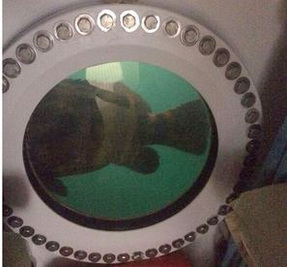 View from the bunk viewport! Credit Liz.
View from the bunk viewport! Credit Liz. What a day! We came in from our last dive not too long ago (been in the ocean for many hours today researching!), had dinner, prepared tomorrow's dive plan, and now we need to sleep! I'll post a lengthier update when I can. Meanwhile, here's a video we recorded today with the Edgertronic camera. It shows a Christmas tree worm (Spirobranchus giganteus) closing at 1500 frames per second. The camera is inside a housing from The Sexton Corporation that so far is working beautifully.
I also posted: What's Mission 31 About? This is Worth the Watch today.
I also posted: What's Mission 31 About? This is Worth the Watch today.
What is historic Mission 31 (and why is it so special?) This great video from Fusion explains the story very well: "Living underwater gives ocean explorers an incredible advantage. Unlike normal surface diving, where a person can only stay underwater a few hours a day, Mission 31 aquanauts can be under the surface for 12 hours or more. This is because their bodies are saturated with nitrogen, allowing them to live at the same pressure as the water that surrounds them."
"To put it in perspective, it would take a normal diver six months to collect the amount of data that the aquanauts can obtain in 31 days."
"To say the least, Mission 31 is ... cool."
The cast of characters includes ... yours truly, Grace under no pressure :)
"This is a story about saving our waters, our oceans, our seas."
We Visited Jacques Cousteau's Grandson at the Bottom of the Ocean, article and video from This is Fusion.
Another great Mission 31 video is Splashdown: Aquanauts Switch Mid-Mission when when Liz, Matt and I splashed down to Aquarius.
| It's daunting trying to write and comprehend everything that's happened today. Arrived, Alive and Well Underwater is below. It's almost unreal. I've imagined today, descending to Aquarius as a home underwater, over and over, and -- after training and hearing of other's experiences, I imagined it pretty much exactly as it was. Nothing was much of a surprise, except for maybe the slight butterflies in my stomach. In the image left, I had just made my bunk and was viewing fish from the viewport. A shark swam by right after I snapped this photo. |
EARLY MORNING
I woke up at 5:30am to organize gear going down to Aquarius, both my personal items and research equipment, and put together all the things that will stay at mission headquarters. It was a night of little sleep. Last night I was up late with the Edgertronic high speed camera we'll use for research. The underwater housing for the camera, from the Sexton Corporation, arrived yesterday and in the day's chaos I didn't have a chance to play with it until after dinner in the Aquarius habitat.
| Unwrapping the camera housing felt like unwrapping a birthday gift. Billy, Brian, and Mike from our production team stayed up with me to gawk over the camera and housing. It's really a special piece of equipment. Doc Edgerton from MIT was with Jacques Cousteau on Calypso in 1954, and now as an MIT alum, I'm in Aquarius using Edgertronic with Fabien Cousteau in 2014! Lot's of history being made here. Before sending it underwater, I wanted to make sure, once again, that I understand the ins-and-outs of the Edgertronic camera and housing. Fortunately Sexton, the maker of the the underwater casing, thoroughly tested the case for us, and made everything as user-friendly as possible. |
Just to be sure, I inspected the case for any possible damages from shipping. I had packed supplies for greasing the o-ring seals on the case. In addition, the housing had to be disassembled prior to being loaded into the pressurization pods down to Aquarius because otherwise I wouldn't be able to open the housing inside Aquarius; the air pockets inside would have remained at 1 atmosphere, while the outside of the case would be at Aquarius's 2.5 atmospheres. (This is also one of the big differences between being in a submarine, which generally remains at a regular atmospheric pressure, and Aquarius, currently the world's only undersea research lab, where we've saturated to the surrounding ocean's pressure and therefore can spend extended time outside the habitat conducting ocean research.)
BON VOYAGE!
| Northeastern Professors Mark Patterson and Brian Helmuth, both former aquanauts, and their graduate students joined us yesterday for dinner, and this morning they waved us "bon voyage" from the dock at 7:30AM. They'll be in the water with us, conducting research via surface dives (about 45 minutes to avoid need to decompress), for the remainder of the mission. In addition, we're in regular communication about research procedures and goals. Liz and I enjoyed the wind and sun on the boat ride out to our new home. |
AQUANAUTS SEE THE SUN ... NO TURNING BACK
| Adam was the first to resurface. He arrived with arms open, in the victory pose. I can't imagine what it must be like to finally feel the sun and breath air from an endless sky after over two weeks. I'll know what that's like soon enough, however. We gave all the returning aquanauts (i.e., Adam, Andy, and Kip) hugs as they boarded the boat, ready to make the journey back to shore. I asked them humorously, "Guys, should we really do this, or turn back now?" Without hesitation, they all said Aquarius is worth it. Go! There's nothing like what we're about to do. |
TRADING SPACES & WORKING UNDERWATER
As I'm writing this, I'm sitting at the Aquarius kitchen table. Dozens of fish swim by the window at by my side. It's unreal, like one of those visually-addicting screen savers. I'm torn between just watching them, and reflecting on the day. Briefly, today was busy; after getting situated in Aquarius, we made our dive plan then executed a 3.5 hour saturation dive setting up plankton traps, finding sponges, and observing fish. Northeastern divers met us in the water this afternoon to deliver some equipment. Specifically, we deployed a dozen plankton traps for Amanda's zooplankton research, and carefully recorded each location. We also collected the last of the environmental contamination sensors, and attempted to use a CTD cast (more about that later... when it's working). Finally, in our dive helmets we joined Fabien (from inside the habitat) on a Skype call with Northeastern University. How cool is that?! That's the longest dive I've ever done. Tomorrow I'll discuss more details on the research.
After the long dive, I worked with our resident expert photographer Matt on the Edgertronic camera.
After the long dive, I worked with our resident expert photographer Matt on the Edgertronic camera.
| See the difference the Edgertronic high-speed camera can make! Water drops I filmed with the camera. | Water drop I filmed with regular video from my iPhone at MIT's Edgerton Center in May. | Fish filmed through Aquarius viewport, 500 frames per second. We haven't perfected the graininess (ISO setting) or focus yet, but that's coming with underwater tests. |
Goodnight, but first...
Here's a fun fact. Three of the six aquanauts in Aquarius right now are left-handed! That's statistically pretty crazy. Guess who...
First Aquarius Post from "at Atlantic Ocean"
It's real! I finally made it underwater! As type this, I'm lying in my bunk in Aquarius, watching fish swim through the viewport. It's almost unreal... :) Stay tuned for a lengthier update, coming soon! Meanwhile, I need to prepare our dive plan for this evening and make sure our research equipment is in order.
Where would Jacques want to celebrate?
|
. . . the ocean! Pioneer explorer Jacques Yves Cousteau said, "The sea, once it casts its spell, holds one in its net of wonder forever."
Today we celebrated under the sea in Aquarius what would have been Jacques' 104th birthday. In commemoration, we all wore red caps, like Jacques' team was known for. We also brought red cap-shaped cookies down to Aquarius, from our friends at Lucky 13 Bakery. |
|
"From birth, man carries the weight of gravity on his shoulders. He is bolted to earth. But man has only to sink beneath the surface and he is free."--Jacques Cousteau
"The sea, the great unifier, is man's only hope. Now, as never before, the old phrase has a literal meaning: we are all in the same boat." --Jacques Cousteau
"The sea, the great unifier, is man's only hope. Now, as never before, the old phrase has a literal meaning: we are all in the same boat." --Jacques Cousteau
This was my first time at the Aquarius table! Until now, I'd only gone as far as the wet porch. It felt like home, as I've taken so many Skype-tours of the habitat, watched it for hours from the control desk, and studied every inch of it during training. Plus, it's such a small space that it doesn't take long to become well acquainted!
My visit to Aquarius today was a surface dive only, so we could spend only 45 minutes maximum in the habitat due to decompression. Time flew by! It was great to chat with Fabien and Kip, and briefly with Andy and Adam as they headed out for research. They're none the worse for wear -- cheerful and extra grateful for the cookies (a welcome respite from the freeze dried food). See Andy's video diary about why they tend to eat "astronaut food," and see this video about how we can send food from land. There'll be a video about today coming out soon; stay tuned!
My visit to Aquarius today was a surface dive only, so we could spend only 45 minutes maximum in the habitat due to decompression. Time flew by! It was great to chat with Fabien and Kip, and briefly with Andy and Adam as they headed out for research. They're none the worse for wear -- cheerful and extra grateful for the cookies (a welcome respite from the freeze dried food). See Andy's video diary about why they tend to eat "astronaut food," and see this video about how we can send food from land. There'll be a video about today coming out soon; stay tuned!
AFTERNOON SCIENCE
This afternoon, the Mission 31 production team shot a short video about how colors change as divers go deeper underwater. Photo credit to Mission 31/Nokia Lumia.
|
We also collected sensors for Northeastern's environmental contamination study. The sensors are powerful although they look vaguely like plastic bags floating on lines (image credit Mission 31/Billy Snook). They will detect even tiny pollutants, including PCBs, PAHs, and potentially dispersants from the BP oil spill.
|
CONNECTING LAND AND SEA
|
Yikes! We arrived back to base at 4:30pm, just when I was suppose to leave for a talk at Florida International University (FIU) in Miami. Cutting it close. I quickly changed and left just in time to make the event. Thank you Bob Howard from the MIT Club of South Florida for the ride!
On the drive to FIU, I really enjoyed Bob Howard's stories of MIT from the 1960s. He talked about working on punch-card computers, getting drafted for the war, and then working at the Pentagon. It's pretty crazy we ended up meeting in the Keys! There was an impressive turn out for the talk. I was happy to see many young people in the audience; including a group from FIRST robotics, which brought back fond memories because FIRST introduced me to robotics as a high school student. Also attending were MIT Club of South Florida members, FIU students, and visiting coral reef scholars. The talk went well, despite experiencing every speaker's nightmare. My laptop crashed just before my talk without saving the last version of the presentation I'd prepared oh-so-carefully yesterday. Even though in my mind the slides weren't quite right, no one in the audience seemed to notice and everything went well. It was a good reminder to be prepared for the unexpected because things in life don't always go as planned. After introducing Mission 31 and Skyping with Andy in Aquarius, I spoke more broadly about ocean exploration. The audience was enthusiastic and asked many excellent questions, including details about aquanaut training and life underwater in the habitat. Others asked about my background in ballet and how I got started in robotics, which was through FIRST robotics, and how this organization influenced my career path! Thanks to Bob Howard, Gary Chin, and Aileen Soto for organizing the fantastic event! |
|
"If you protect the ocean, you protect yourself."
Jean-Michel Cousteau, when he visited Fabien in Aquarius last weekend.
The fabulous Mission 31 production team just released this video, documenting Dr. Sylvia Earle and Jean-Michele Cousteau's visit to Aquarius. Both Dr. Earle and Cousteau are characters! Speaking of Cousteau... Tomorrow is Jacques Cousteau's birthday. We'll celebrate big-time!
| Today Mission 31 team members Matt and Brian returned from the Amazon, where they were shooting a continuing project with Fabien Cousteau's sister Celine. You can see photos, showing how the Amazon has changed during the lifetimes of three Cousteau generations, in the ebook Return from the Amazon available in the iTunes Store. Matt and Brian told us the Amazon was scorching hot, over 105 degrees F. The 80-degree weather here in sunny Florida must now feel like a cool spring day! The intrepid explorers also shared stories of the bugs and difficulty in traveling around the Amazon. What an experience! I can't wait to hear more over dinner. Meanwhile, I continue preparing Mission 31 science research from topside. Today we sent out plankton nets for a research project designed by Northeastern graduate student Amanda Dwyer. I'm also counting down till saturation -- 7 more days! |
The Turtle Hospital
Last Friday I had the opportunity to visit the Turtle Hospital with production team member Billy Snook. I was completely blown away at the incredible organization. It pained me to see how turtles have suffered from human causes, even indirectly. For example, sea grass absorbs fertilizers that run off into the ocean that turtles eats. The chemical fertilizers can develop tumors called fibropapilloma that will slowly and painfully kill the turtle. If the fertilizers in our crops do that to turtles, what are they doing to us?
| I posted this story to my Instagram. Thankfully the turtle made it into the hospital's care and is on the road to recovery. | This photo shows one of the recovered turtles; without the care of the Turtle Hospital this turtle would have died from human causes. Let's be optimistic! |
If you extra specially care about sea turtles, check out The Turtle Hospital (maybe even call or donate!). There's also a fantastic non-profit called the Sea Turtle Conservancy; I follow them on Facebook to stay up-to-date on all their work (and see pictures of sea turtles on my news feed.)
A DIVING DRONE
| I forgot to tell this story. On Spalshdown Day, the Mission 31 production team smartly deployed quadcopters to capture aerial footage of the excitement. Well, there was some problem with one of the copters (never really understood what happened), and it fell into the ocean. Luckily, one of the Navy divers, Carter, without missing a beat, dove in and rescued the copter on a breath-hold dive to 10m. Amazing! Sometimes robots need the Navy to rescue them too. |
There's also blog posts: "Shellebrate" -- It's World Turtle Day! and Sea Life Just Fish? Think Polar Bears Too!
Happy World Oceans Day! Mission 31 and Aquarius, the only undersea research laboratory in the world, was the place to be for this year's celebration. Jean-Michel Cousteau and Dr. Sylvia Earle graced us with their presence, as well as Vampire-actor and conservationist Ian Somerhalder (his foundation) and former aquanaut Greg Stone (his TED talk). We celebrated with visits to the crew in Aquarius (Fabien, Adam, Andy, Otter, Kip and Ryan) and with a special event at Islamorada's History of Diving Museum.

My World Oceans Day Promise is to engineer technology and help make policy to protect our oceans from climate change, pollution, and overfishing. This photo, just released by Mission 31, is from training. I'm surprised I can recognized everyone in their gear. From left to right, it's Kip, Fabien, Andy, Liz, Adam, and me.
| Today I graduated from MIT! I'm incredibly grateful for the many, many people who helped me get to this point. Since I didn't graduate from high school, this is was my first degree (B.Sc. in Mechanical and Ocean Engineering). Even though I missed the ceremony, I followed along the live feed and flipped the "brass rat" class ring with the rest of my classmates. Someone put a model of Doc Edgerton's iconic milk drop image on their cap at commencement. I've been working with the MIT Edgerton Center (blog post here) to use their remarkable high-speed camera for Mission 31. With this camera, we'll try to capture Goliath Grouper's unique feeding behavior, hoping to validate an unproven theory that they use the sound of a collapsing cavitation bubble formed in their head as a weapon to stun prey. We should produce some amazing footage if all works. We tested the Edgertronic camera by filming the M31 German Shepherd mascot "feeding" on milk (video here). Doc Edgerton also worked with Jacques Cousteau. The commencement speeches were inspiring, such as MIT President's Reif's charge below: | |
| "Whatever road you choose to travel, I want you to reject the idea that what you see in front of you is the best that we human beings can do. I want you to see the status quo as nothing more than ... a place to start, because you know we can do better. ... More daring and more passionate. More rigorous, playful, and ambitious. More humble, more respectful, more generous, and more kind." -- from MIT President Reif's commencement charge to graduates today |
Right now I'm excited for ...
- World Oceans Day, which is Sunday
- The Edgertronic high-speed camera arriving with its new waterproof housing from Sexton Corporation next week (Doc Edgerton)
- Ian Sommerhalder visiting tomorrow (Ian's foundation)
- Dinner with Sylvia Earle and Jean-Michel Cousteau (tonight!)
Author
Grace Young (B.S., MIT, Ph.D, Oxford) is an ocean engineer, aquanaut, and explorer currently working at X. She lived underwater as a scientist and engineer on Fabian Cousteau’s Mission 31, and is a National Geographic Explorer.
Blog Highlights:
1. No Engineer is an Island
2. Mission 31 Highlights
3. Sailing Across the Atlantic
3. Return to CERN
Categories
All
Arts & Science
Conservation
Coral Research Mission
Edgertronic
Marine Robotics
Mission 31
Mission 31 Training
Ocean Reports & Facts
Ocean & Space Science
Outreach
Research
Sailing & Adventures
Sea Creatures

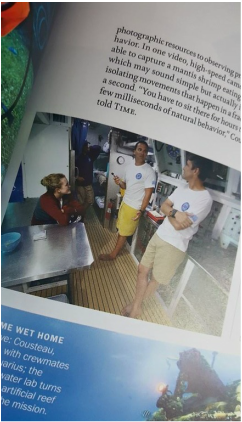

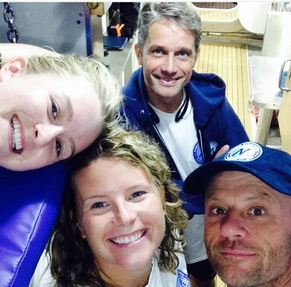
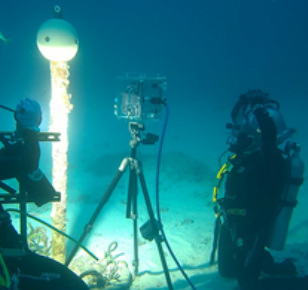





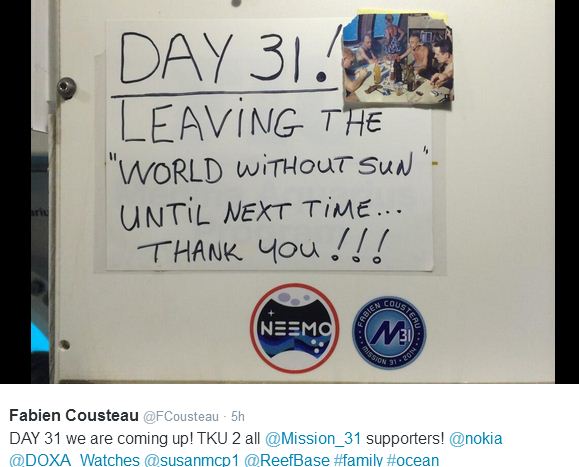

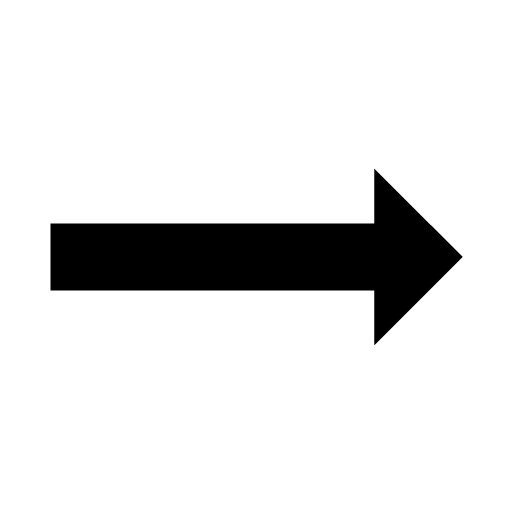





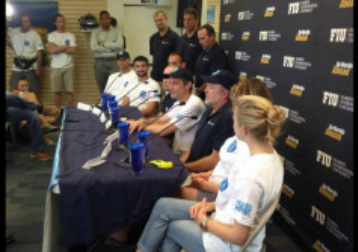
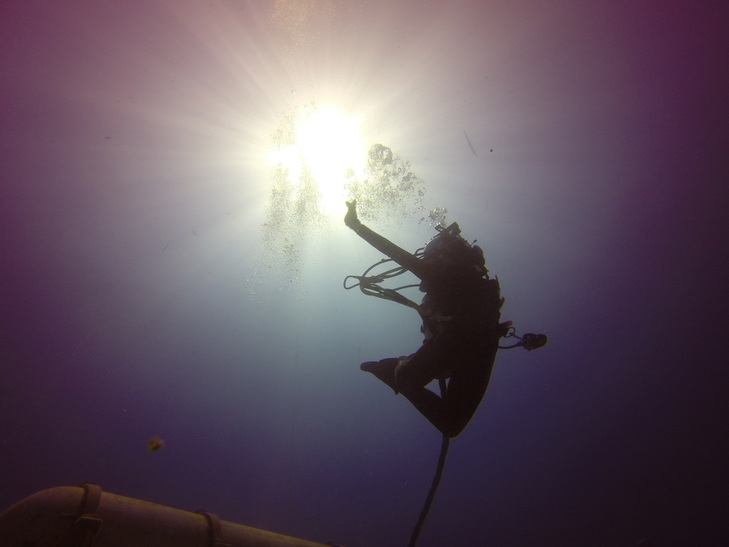







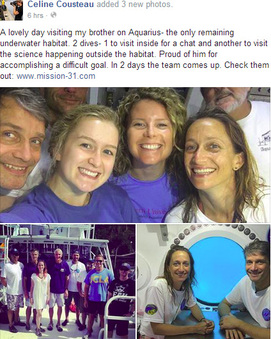











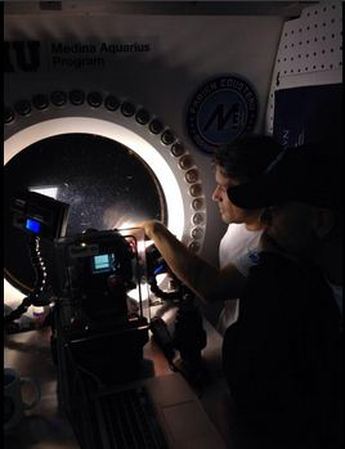

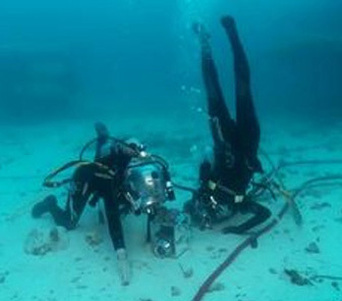


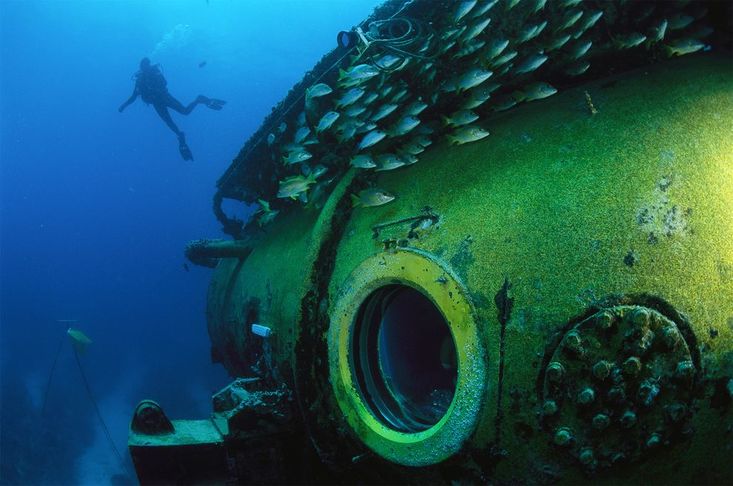





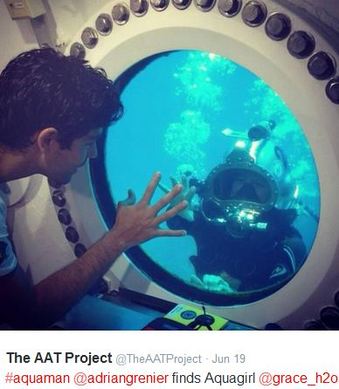

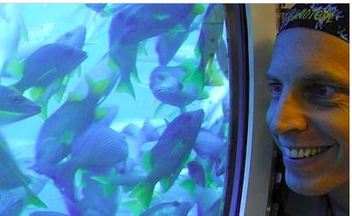

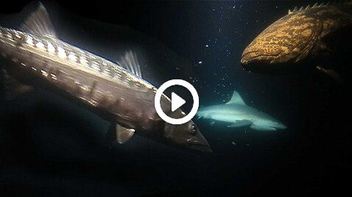









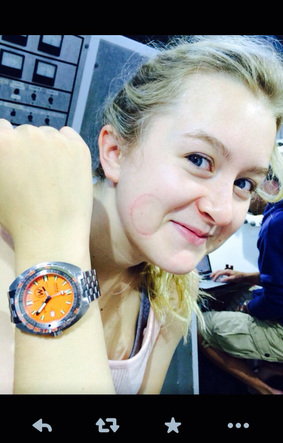


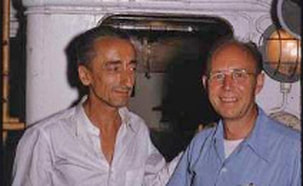
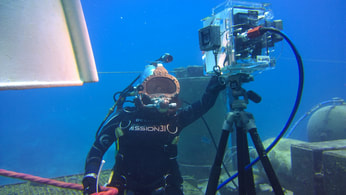
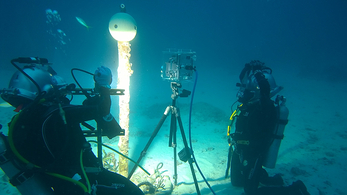
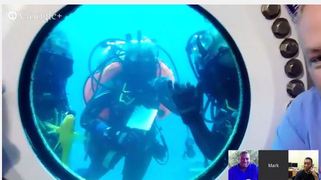

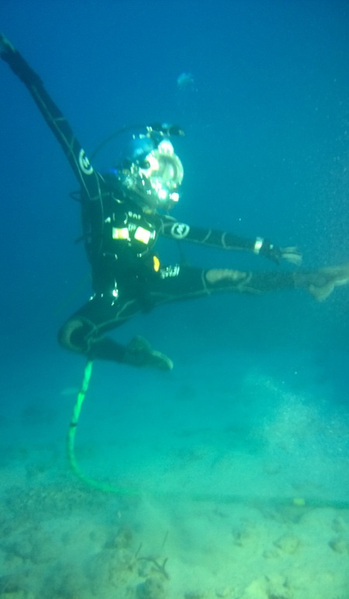






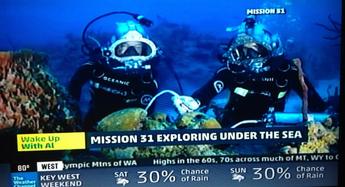




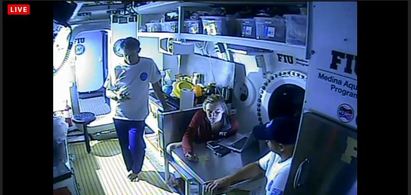





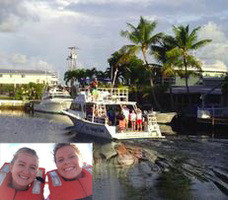












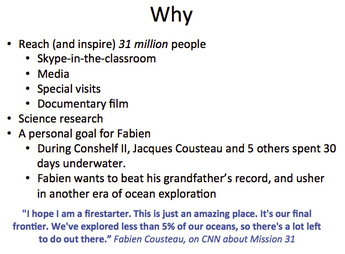












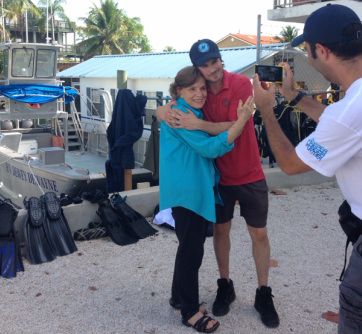












 RSS Feed
RSS Feed
